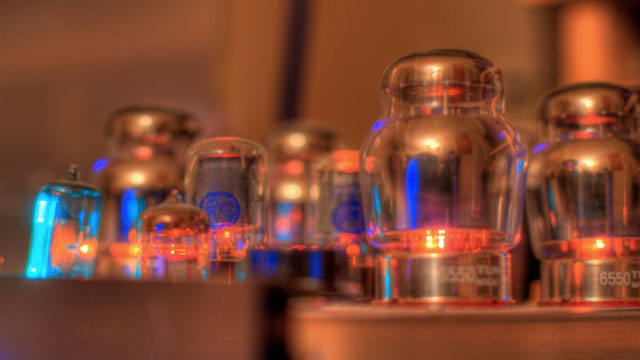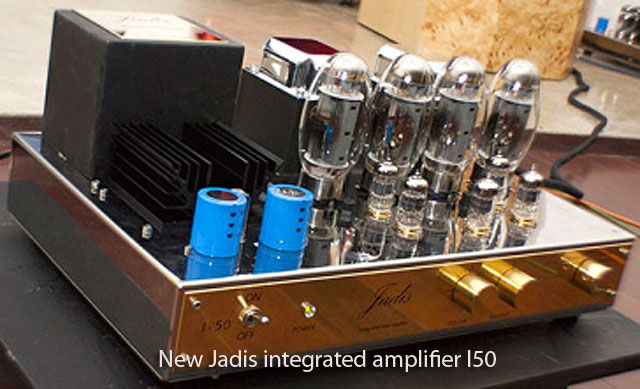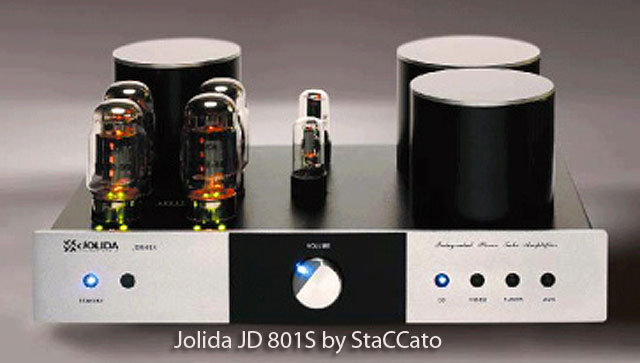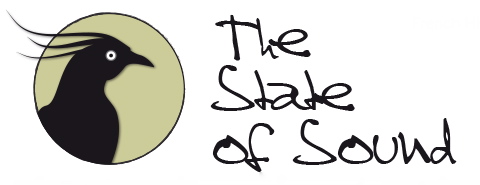Tube Amplifiers : Still Resisting the Test of Time

Tube-based amplification is a topic that inspires passion and enthusiasm or that leads to division and aggravation. I want to throw out a few thoughts on the subject with the goal of examining opinions about this much-talked-about “tube sound” and taking advantage of the opportunity to also recount a technological epic.
The vacuum tube, patented by English physicist and electrical engineer John Ambrose Fleming in November 1904, celebrates its 110th birthday this year. The arrival on the scene of the vacuum tube allowed the later development of other technologies, such as the radio, the television, and, in the 1960s, the first computers, which contained up to tens of thousands of tubes! In the 1970s, there was a push to definitively get rid of tube-based amplification systems that was based on some rather compelling arguments: tubes overheat, they are expensive and fragile, they don’t last long, etc. Such disadvantages sped up the marginalization of tube technology, which was to the advantage of transistor-based technologies. At the time, a handful of vacuum tube nostalgics were the only ones still interested in tube amplifiers. Then the arrival and spread of the CD prompted discussion about what was termed the “cold sound” produced by digital systems, which led people to attempt to bring back analog technologies; tube technology likely also benefited from this yearning for the good old days. In the 1990s, the arrival on the market of affordable vacuum-tube-based products made in Asia had the advantage of making them more accessible and broadening their distribution. On the flip side, production quality was very hit or miss, which turned the stomachs of some. Finally, more recently, the marketing of products with a vintage look has undeniably contributed to the “comeback” of tube technology.

Discussion surrounding tube-produced sound
“They produce warm sound”: that is the most common argument in favor of vacuum tubes. It is also overly simplistic. Alain Cavro is the manager of Staccato, a HIFI store in Nantes. He is also contributed to the foundation of Ppfff, a new brand that offers, in particular, a bold new tube amplifier model. He has a very clear opinion on this subject: “I think that this idea that tubes create warm sound is not at all enticing. It seems to me to be equivalent to saying that they produce sound that lacks vigor. When someone insists on the fact that tubes produce beautiful tones and rich harmonies, I readily respond that hearing harmonics that don’t exist doesn’t interest me at all. In truth, I think that the sound’s color comes not from the fact that you are using tubes, but rather the way in which you are using them. I find that it is actually these “flaws” that draw people to tubes in the first place. In my opinion, a tube amplifier shouldn’t produce colored sound (in so much as you can control that). The new PP88 amplifier is trying to offer responsive, precise, and agile sound reproduction that works to meet all the sound sensitivity requirements that are needed to naturally reproduce music.
Jean-Christophe Calmettes is technical director at Jadis, a family-owned business that has been selling high-end tube amplifiers for the last 30 years. He comments, “It makes no sense to say that tube amplifiers produce colored sound or, if you do, then you also have to admit that transistor amplifiers produce colored sound. It is simply wrong to insist that only tube amplifiers do so. Personally, I am a firm proponent of the specific sound produced by our products; it adds to their value. However, tube technology can involve certain problems and a number of constraints. If you want to create something of quality using tubes, I can promise you that you are in for a daily fight.
Objectively listing the advantages and disadvantages of tube amplification in terms of sound restitution is a subjective process because it comes down to your own personal perceptions and experiences; your individual assessment should be based on what is most essential: the music’s presence.

The ability to customize
What appeals to adroit do-it-yourselfers is that they can customize or make improvements to tube amplifiers. Jean-Christophe Calmette says, “Even if there are only a handful of people interested in doing so, some of our clients want to be able to change the tubes in order to change the sound. In general, we also have to make sure that our machines are user friendly so that people can change the tubes themselves because vacuum tubes have a limited life span (2,500 hours on average, but sometimes a lot longer).
One of Alain Cavro’s specialities is modifying and improving tube amplifiers. He recounts, “One day, as a favor to a client who lacked the budget to buy a new machine, we made a game out of trying to improve his current amplifier (a Jolida 302 made in China) to make it a bit higher quality. Since the results far exceeded our expectations, we decided to offer the modification of this product à la carte as a service to our clients, varying the extent of the changes depending on the client’s needs and budget. The amplifier in question undergoes numerous changes: the wiring is switched around, the power supply system is reworked, parts are replaced, chips are moved, point-to-point wiring is installed, and transformers are fixed up or replaced. In the end, the product may bear little resemblance to the original; it may be up to 70% transformed.” The cost for these improvements starts at 1,500 euros, to which you need to remember to add the price of the original product.
When you choose to go with a tube amplifier, it means that you are choosing a different approach to listening to music. A word of caution: the very high prices of certain products do not always reflect a higher level of quality. Therefore, you cannot let your attention be diverted by technological jargon (at any rate, you need to have a solid grasp of electronics to be able to evaluate the importance of what is being said) or by pure aesthetics. In order to make an informed decision, you have to do numerous comparative auditions of amplifiers so as to be able to acquire a certain amount of personal experience, an “ear” for things; you should also get a qualified professional to come along.
Alfred de Musset, the French poet, once said : “The container’s not important as long as the contents get you drunk.” I am willing to bet that there are a number of curious and patient souls out there who would be able to savor the contents of this particular container.
![]()
More information to understand Vacuum tube technology (wikipedia)
This article originally appeared in Michel Aublanc’s The State of Sound in France (link below)
Stereo Times Masthead
Publisher/Founder
Clement Perry
Editor
Dave Thomas
Senior Editors
Frank Alles, Mike Girardi, Russell Lichter, Terry London, Moreno Mitchell, Paul Szabady, Bill Wells, Mike Wright, and Stephen Yan,
Current Contributors
David Abramson, Tim Barrall, Dave Allison, Ron Cook, Lewis Dardick, John Hoffman, Dan Secula, Don Shaulis, Greg Simmons, Eric Teh, Greg Voth, Richard Willie, Ed Van Winkle, Rob Dockery, Richard Doran, and Daveed Turek
Site Management Clement Perry
Ad Designer: Martin Perry






Be the first to comment on: Tube Amplifiers : Still Resisting the Test of Time